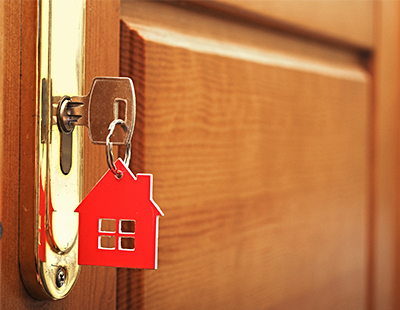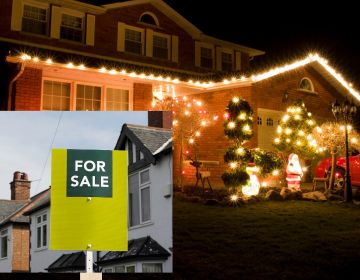
Buy-to-let landlords are increasingly favouring Houses in Multiple Occupation (HMO) and more complex property types due to the often higher yields available.
Precise Mortgages reports that just over a fifth - 21% of landlords - are currently considering purchasing an HMO, owed in part to the high yields achievable.
According to the research undertaken by the lender, more than a third, 40%, of landlords plan to sell terraced houses in the year ahead, while just 8% of landlords intend to offload HMOs.
HMOs are highly attractive to investors, especially in UK cities with a high population of students and young professionals.
Whilst the market conditions in many areas are becoming more developed and competitive, a HMO property with the correct scheme and management can deliver landlords and investors higher rental yields, when compared with a standard single let rental property.
Figures provided by Precise Mortgages reveal that HMOs saw the greatest average rental yields in Q2 at 6.3%, compared to the market average of 5.5%.
Alan Cleary, managing director at Precise Mortgages, commented: “In a time of market uncertainty, HMOs are an attractive option for professional landlords looking to maximise yields.
“As HMOs attract multiple tenancies, gross rental income tends to outstrip single lets meaning the rental income is more secure if one tenant leaves a void.
“The expansion of the HMO sector underlines how experienced landlords are rebalancing their portfolios.
“It also demonstrates the opportunity for brokers to work with specialist lenders who have expertise across the widest product set to support clients who are reassessing their portfolios.”
Want to comment on this story? If so...if any post is considered to victimise, harass, degrade or intimidate an individual or group of individuals on any basis, then the post may be deleted and the individual immediately banned from posting in future.







.jpeg)





.jpg)









.png)






Join the conversation
Jump to latest comment and add your reply
Student HMO flats offer high yields and several solvent guarantors to spread the risk. I now focus entirely on this market.
More rubbish Surveys / Research every day. The internet is the worst thing that ever happened to Private Sector Housing. What used to be Office Clerks incidental to a main business & low paid has now become jumped up Digital Academics hi jacking business taking complete control, robbing the business and making all the rules for their personal gains, then you wonder what’s wrong.
I agree 100%. We take the risks and they want to carve their slice risk free
HMO's sure sounds like a high risk area for passive buy to let Landlords. There is also the potential for untold regulation.
An HMO flat let to 4 students with 4 solvent guarantors on a joint and several liability basis is a much lower risk option than letting to a single household and gives much better yields with zero voids with properly planning. Regulations are mainly common sense safety things but tend to dissuade the rogues and those unable to understand some simple rules and fill in a couple of forms.
No need to invest in purpose built HMO.
Just a normal 4 bed house.
No HMO construction needed.
No Mandatory HMO License required.
Just the normal stuff for any rental property.
No risk of Individual Council Tax Banding.
Not competing with PBSA which are being increasingly built and compete with normal student lettings.
Student market is best avoided.
4 unrelated sharers no risk of RTB with a Labour Govt.
Plenty of demand on Spareroom.
I'd suggest it's a bit more complex than you've suggested. The HMO Management Regulations would apply even if mandatory HMO licencing does not.
Operating a house even as a small HMO would require mains a wired interlinked smoke alarm system be installed among carrying out other fire safety measures.
In addition Local Authorities could enforce their local HMO standards which apply minimum room sizes, sharing ratios etc.
Local Authority Building Control departments may also stipulate improvements be made in terms of noise insulation if rooms are let individually rather than the property as a whole.
All the above of course depends on Local Authority actually becoming aware of the property being let by the room and that might not happen, but why take a chance?
Sorry Paul. Don't agree. Students usually make excellent tenants of relatively upmarket properties and as 4 unrelated sharers also avoid rtb issues. Only additional construction issues are fire doors as everything else like mains smoke alarms, annual PAT tests etc. make the property safer. Students renting down market properties are no worse than other down market tenants but such properties and tenants are best avoided.
Nope no interlinked alarms are required.
Just a battery operated one on each floor with possibly a heat detector for the kitchen.
With one AST with unrelated sharers it is not letting by the room.
If that was the case the LL would be responsible for the Council Tax.
.A bog standard 4 bed house let to 4 unrelated sharers doesn't need anything specific doing to it.
It is just a normal house.
Of course going to 5 sharers substantially changes things which is why you keep to 4 unrelated sharers.
I'm just about to let a two bed flat to four unrelated sharers and am not required to do anything to the flat since it was built.
I have a CO detector and the original wired smoke detector as required for new properties.
Nothing else is needed.
Your comments might apply where you are but they are not universal. Many local authorities apply much stricter rules but these drive up rents and discourage rogue landlords and tenants.
I think we'll have to agree to disagree on this one.
An HMO is dwelling occupied by 3 or more persons forming 2 or more households where there is sharing of facilities. So with your 4 unrelated sharers you have an HMO, the type and amount of tenancies is irrelevant.
In terms of operating an HMO there isn't really much difference between having less than 5 or more than 5 unrelated occupiers apart from the requirement to have an HMO licence, either way the landlord still needs to comply with local HMO standards, Management Regs, and fire safety requirements.
As I mentioned previously, the HMO Management Regs apply even if mandatory HMO licencing does not. These Regs place a duty on the manager to keep the property well maintained and in good repair.
This is where the requirement for additional fire safety measures stems from. All HMOs are different as is the the level of risk from fire in each, but generally speaking a standard two storey house let by the room, would be required to have a mains-wired interlinked system, thumb turn locks on bedroom and final exit doors etc. See the Lacors National Fire Safety Guidance.
A two bed flat on one level is obviously different to a 2 storey 4 bedroom house in terms of fire risk so this is maybe why you've not had to upgrade anything so far.
That's not to say it wouldn't be recommended though, battery operated smoke alarms are far more prone to tampering/technical failure than mains wired systems with battery back-up.
Going back to your "bog standard 4 bed house", if you're converting it from family house to let by the room/HMO, it most definitely will require certain improvement/upgrades.
With regard to Council Tax if you can get 4 unrelated sharer's on one AST then perhaps you can get them to pay Council Tax, but if you have people coming and going on individual contracts then typically the landlord is liable.
Nah not with 4 bed houses with 4 unrelated sharers
There is no legislation that Councils are allowed to impose on 4 unrelated sharers.
LL could be subject to Additional Licensing but that is it.
No material change to a property structure is required.
The Management of Houses in Multiple Occupation (England) Regulations 2006 apply because 4 unrelated sharers would constitute the property being an HMO.
The 2004 housing Act introduced in 2006. I believe 4 unrelated persons does count as a HMO but not a licensable HMO. Hi Robert I must be that bloke who struggles with a couple forms, but only digital academic understand themselves but don’t understand traditional LL’s that’s why it’s taken me 41 years a LL to become inept, it really took them a long time to wear me down & achieve their aim, as for the common sense requirements they have cost me tens of thousands £, but now have the worst property condition that I ever had, since control of the letting was taken from the LL & excluded him from the property. We now have over crowding & subletting whole sale but not by LL. HMO is a god send for Tenants, LL restricted to 4 persons so then the Tenants have all this extra capacity to fill up, LL powerless to act because he has been given no instrument to deal with it, only a penalty if he dares to raise any issues.
Well in a bog standard property I will never adjust things.
It is a residential property with 4 unrelated sharers.
I will not be doing anything.
A property is perfectly OK as it is whether there are 4 individuals or 4 family members.
No thumblocks needed as no locks on bedrooms.
Battery powered alarms are sufficient.
Not going to start ripping down ceiling for hard wired alarms.
Councils simply can't force normal homes to be changed if there are 4 unrelated sharers.
Keeping a home as a home is all that is needed.
I for one would never change anything in a home because of 4 unrelated sharers.
Anything that affects the saleability of a home as a home would mean not worth having unrelated sharers up to 4 in number.
No way would I carry out material changes at such a normal property because of 4 unrelated sharers
Please login to comment